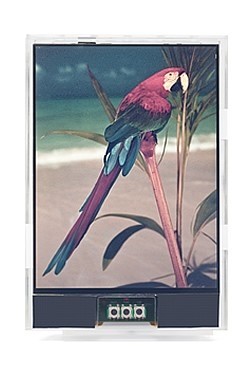Most of us have had to deal with trying to use a smartphone or tablet under direct sunlight at some point. Even with the display at max brightness, it can often be difficult to see what's on the screen and you lose a ton of detail and color saturation. To say that it's an exercise in patience might be a fair summary for some.
E-Ink displays like those found on the Kindle work great under sunlight because they use reflected light rather than traditional backlights to illuminate the screen. Of course, these panels also have a ton of other setbacks that prevent them from being effectively used for smartphones and tablets.
Japan Display, a joint venture between Hitachi Displays, Sony Mobile Display and Toshiba Mobile Display launched in April 2012, believe they have a solution to the current problem. The company has created a low-power, paper-like LCD display that uses reflected light much like E-Ink but is capable of displaying color video.
As we understand it, there are three key components at play here: a rear reflective layer, a liquid crystal layer in the middle and light control layer on top. Ambient light gets reflected from the rear layer and passes through the center liquid crystal layer, producing a monochrome image. Color filters embedded in the top light control layer are responsible for adding color. What you end up with is a picture that's said to have a paper-like quality.
Early 7-inch prototypes feature a resolution of 1,024 x 768 but are only able to cover five percent of the NTSC color gamut. A follow-up prototype will apparently be able to boost that figure up to 36 percent albeit at a slightly lower resolution of 1,024 x 576. The displays feature a 30:1 contrast ratio and consume only three milliwatts when displaying still images.
The first prototype is ready for production immediately, according to Japan Display's Kazunori Yamaguchi. No word yet on which devices this might show up in first, however.
